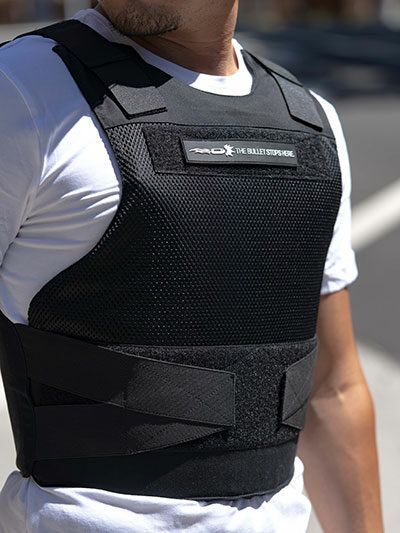
Breathable Armor Carriers & Base Layers: Maximizing Comfort Under Tactical Vests
In Saudi Arabia's challenging climate, security and military personnel face the dual challenge of maintaining protection while managing comfort during extended operations. Advanced breathable armor carriers and moisture-wicking base layers have revolutionized tactical comfort, enabling professionals to perform at peak efficiency even during prolonged vest wear in temperatures exceeding 45°C.
The Critical Need for Tactical Comfort in KSA
The extreme heat and humidity conditions prevalent across Saudi Arabia create unique challenges for personnel wearing protective vests:
- Heat Stress Management: Ambient temperatures regularly exceeding 40-50°C compound with body heat trapped under armor
- Moisture Accumulation: Sweat build-up under non-breathable carriers leads to discomfort and potential health risks
- Extended Wear Requirements: Security shifts lasting 8-12 hours demand superior comfort systems
- Performance Impact: Discomfort directly affects alertness, reaction time, and operational effectiveness
- Health Considerations: Poor ventilation can lead to heat rash, fungal infections, and heat-related illnesses
Climate Impact on Tactical Performance
- Studies show 35% reduction in operational effectiveness when body temperature rises above 38.5°C
- Proper base layer systems can reduce perceived temperature by 3-5°C
- Breathable carriers improve comfort ratings by 60-80% during extended wear
Advanced Breathable Armor Carrier Technologies
1. Ventilation System Design
Modern armor carriers incorporate sophisticated ventilation mechanisms:
- 3D Mesh Backing: Spacer fabric creates air channels between the vest and body, promoting airflow
- Strategic Venting: Laser-cut perforations in non-critical areas allow heat escape without compromising protection
- Moisture Channels: Engineered pathways direct sweat away from contact points
- Adjustable Airflow: Modular vent systems allow customization based on environmental conditions
2. Advanced Materials and Construction
- Moisture-Wicking Fabrics: Quick-dry polyester blends with silver ion antimicrobial treatment
- Phase Change Materials: PCM integration for active temperature regulation
- Hybrid Construction: Strategic placement of different materials optimized for specific body zones
- Lightweight Design: Carbon fiber and advanced composites reduce overall system weight
3. Ergonomic Comfort Features
- Anatomical Shaping: Pre-curved panels follow natural body contours
- Pressure Distribution: Padded contact points spread vest weight evenly
- Range of Motion: Articulated design maintains mobility during tactical movements
- Quick-Release Systems: Emergency doffing mechanisms for medical situations
High-Performance Base Layer Systems
Moisture Management Technology
Professional base layers form the foundation of tactical comfort:
- Bi-Directional Wicking: Fabrics transport moisture from skin to outer surface
- Rapid Evaporation: Micro-fiber construction accelerates moisture transfer
- Odor Control: Antimicrobial treatments prevent bacterial growth during extended wear
- Thermal Regulation: Smart fabrics adapt to body temperature changes
Specialized Fabric Technologies
- Merino Wool Blends: Natural temperature regulation with synthetic durability
- Synthetic Performance Fibers: Polyester/nylon combinations optimized for moisture transport
- Cooling Yarns: Jade-infused or cooling mineral treatments for enhanced comfort
- Compression Elements: Graduated compression for improved circulation and muscle support
Application-Specific Solutions
Law Enforcement Operations
- Urban Patrol: Lightweight carriers with maximum ventilation for foot patrols
- Traffic Enforcement: High-visibility integration with cooling features
- Special Operations: Modular systems accommodating additional equipment
- Extended Surveillance: Maximum comfort for stationary operations
Private Security Applications
- Corporate Security: Discrete carriers with professional appearance
- Event Security: Quick-change systems for varying threat levels
- Industrial Security: Chemical-resistant options for facility protection
- VIP Protection: Concealed carriers with formal wear compatibility
Military and Defense
- Desert Operations: Maximum cooling efficiency for arid environments
- Base Security: Extended-wear comfort for perimeter duty
- Training Operations: Durable systems for intensive use
- Ceremonial Duty: Climate-controlled systems under dress uniforms
Case Study: Saudi Royal Guard Implementation
The Saudi Royal Guard implemented advanced breathable carrier systems across their operational units. Results after 6 months:
- 78% improvement in comfort ratings during extended duty
- 45% reduction in heat-related medical incidents
- Enhanced alertness during long shifts, improving security effectiveness
Sizing and Fit Considerations
Proper fit is crucial for both protection and comfort:
- Comprehensive Sizing: Extended size ranges accommodating diverse body types
- Adjustability Systems: Multiple adjustment points for custom fit
- Gender-Specific Design: Anatomically appropriate cuts for male and female personnel
- Growth Accommodation: Adjustable systems allowing for seasonal weight changes
- Equipment Integration: Compatibility with communication devices and accessories
Maintenance and Care Protocols
Proper maintenance ensures continued performance and hygiene:
- Daily Care: Post-shift cleaning and inspection procedures
- Deep Cleaning: Professional cleaning services for carrier maintenance
- Rotation Systems: Multiple carrier allocation for continuous operations
- Replacement Schedules: Preventive replacement based on usage metrics
- Storage Requirements: Proper ventilation and moisture control during storage
Future Technologies and Innovations
Emerging technologies promise even greater comfort advances:
- Active Cooling Systems: Battery-powered cooling elements integrated into carriers
- Smart Fabrics: Temperature-responsive materials with automatic adjustment
- Biometric Integration: Real-time monitoring of wearer physiological status
- Modular Climate Control: Interchangeable cooling/heating elements
- Advanced Materials: Graphene and nanotechnology applications
Conclusion
Breathable armor carriers and advanced base layer systems represent critical innovations enabling Saudi Arabia's security and military personnel to maintain peak performance in challenging environmental conditions. As technology continues advancing, these systems will become increasingly sophisticated, ensuring that protection and comfort work in perfect harmony to support those who protect our communities and nation.
About the Author

Major Ahmed Al-Mansouri (Ret.)
Tactical Equipment Specialist with 15 years of military service and expertise in personal protective equipment. Currently advises security organizations across the Middle East on tactical uniform optimization.
Key Benefits
- • Enhanced thermal regulation
- • Superior moisture management
- • Extended wear comfort
- • Improved operational performance
- • Reduced health risks